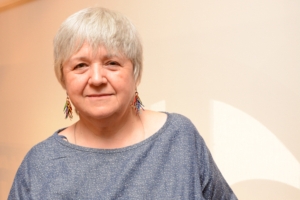Message from the Dean

Through this website, we wish to welcome you and open the doors of the Faculty of Fine Arts to give you all the information that you may find useful to learn about the structure, organization, services and everything else that we see as important in your first contact with the Faculty.
The Faculty of Fine Arts occupies five buildings. The first is the Principal building, which houses the offices of the governing bodies, departments and administration, a conference room and meeting room, workshops for drawing, painting, sculpture, engraving and design, a photography lab and computer facilities. The second is the Sculpture building (Annex I), which is dedicated exclusively to the teaching of sculpture and contains several workshops and offices. The third is the Menjadors building, which has classrooms and workshops for sculpture and engraving. The fourth is the Adolf Florensa building, where most of the classes on theory take place. It also contains classrooms for sculpture, design and digital photography and video, as well as the Lab-Media space. The fifth is the Parxís building (Annex II), which has several workshops for painting, image and animation.
At present, the Faculty offers three bachelor’s degrees: in Fine Arts, in Conservation and Restoration of Cultural Heritage, and in Design. One of the questions that most interests and concerns us is the relationship between our graduates and the professional world. That is why we offer activities to build this link during the training provided in our three bachelor’s degree programmes.
Since the Faculty became part of the University of Barcelona in 1978, research into art and artistic creation, design and conservation and restoration has traditionally been a key driving force of our activity. In fact, the Faculty’s doctoral programmes were among the very first to be offered in Europe.
On behalf of myself and our entire leadership team, let me again welcome you to the Faculty. It is our hope that you will find in our offering the studies that you need in order to face the challenges and respond to the issues that now confront the field of fine arts.
M. Dolors Tapias


